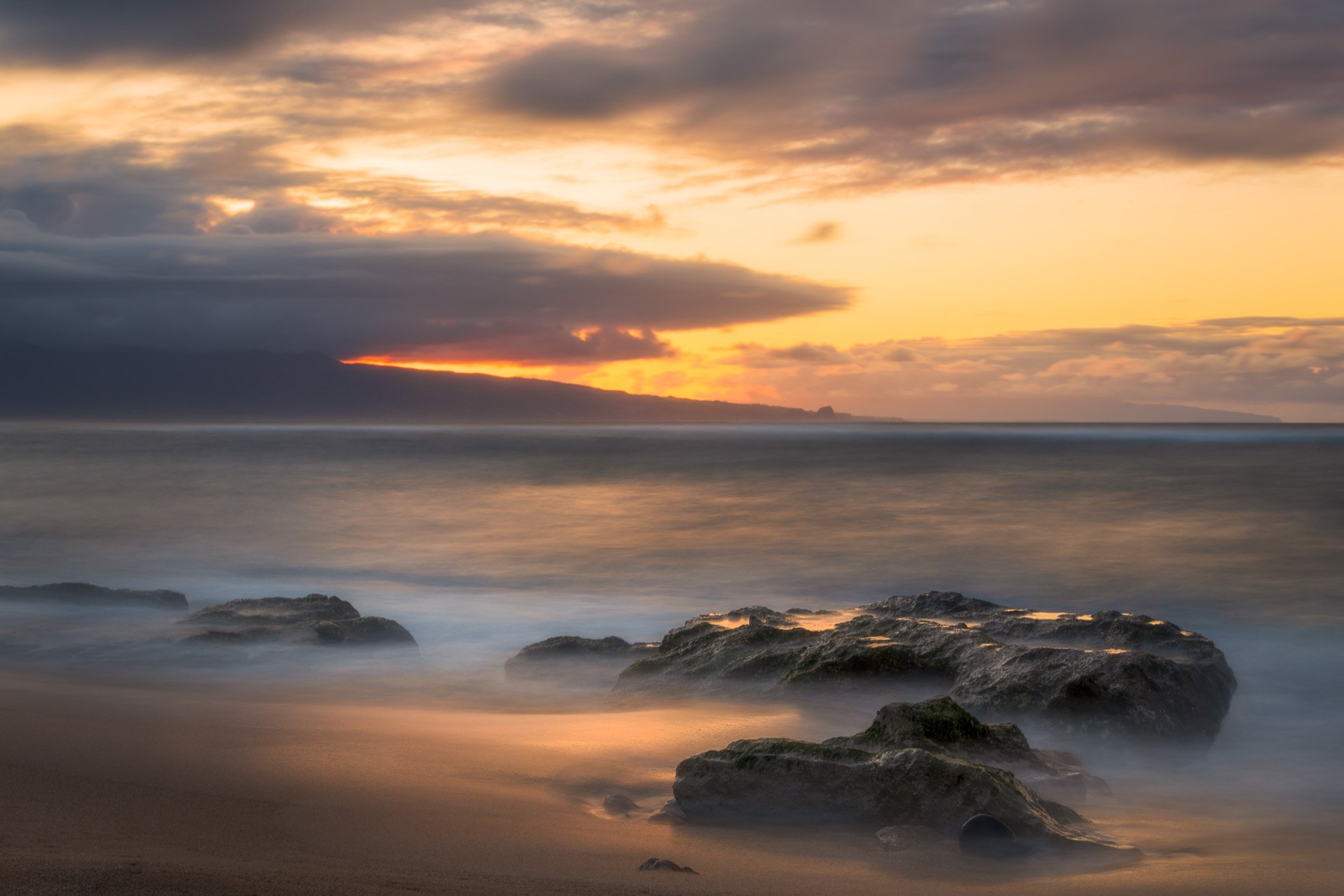There is something truly magical about the ocean! The movement and sound of the waves crashing along the shore is mesmerizing. The ocean is one of my favorite subjects to photograph because getting creative with shutter speed can keep me experimenting for hours.
There are 4 ways I used shutter speed to create different effects with my seascapes!
1) Fast Shutter Speed - Sometimes the texture of the crashing or cresting waves grabs my eye and instead of softening the water, I want to emphasize the texture and power of the ocean by freezing the movement with a fast shutter speed.
1/2000s shutter speed to freeze the motion of the crashing wave. Photographed at 360mm with the Sigma 150-600mm Contemporary Lens.
2. Slow Shutter - One of my favorite shutter speed choices with ocean waves is in the range of .4 seconds to 2 seconds. In this range, the movement of the water is softened somewhat but texture and shape is still evident. With these shutter speeds, the look of the water can change with just small changes in exposure length.
With these shutter speed ranges, a 6 stop ND filter is my go to choice and a tripod is necessary for keeping the camera stable.
1/4 second exposure capturing the movement and texture in the crashing waves
3) Much Longer Exposures - A third creative choice photographing the ocean is to use much longer exposures to smooth out the water completely and create a really soft and dreamy look. Here I am referring to shutter speeds generally of 10 seconds and longer. When we get even longer, with shutter speeds of 30 seconds and more for example, we also get the benefit of getting dreamy movement in the clouds too. When I photograph exposures from 10 to 30 seconds, a 10 stop filter is my go to ND filter. If working in bright daylight hours, more than 10 stops may need to be blocked to get 30 seconds or longer. In these situations, I will use a 15 stop filter or stack filters to extend the time. Be sure to make sure your tripod is stable for these longer exposures. If the water flows up over the legs, it can move just enough to blur the image.
15 second exposure for a dreamy and soft feel in the water
4) Intentional Camera Movement - the fourth way I love to shutter speed creatively is to combine a slower shutter speed with intentional camera movement. This movement creates an abstract and painterly feel to the ocean. My preferred shutter speed range for ICM is .5 seconds to 1 second because it allows me to control if I move fast or slow as well as how much I move the camera over this time period. I generally use a 6 stop ND filter to get my shutter speed in this range. If I am without a filter, it is possible to use intentional camera movement with somewhat faster shutter speeds with success and I don’t hesitate to do so. I simply prefer the .5s to 1 second range . Check out Seascape Panning for more information on using this technique.
1/4 second of intentional camera movement with the Sigma 150-600mm Contemporary Lens at 220mm
Experimenting with all these different ways of photographing the water can keep me busy with the ocean for hours! Can’t wait to get back there again!
Kristen Ryan is an award winning and published landscape photographer and educator residing in the Midwest suburbs of Chicago. All images are available for purchase in the Fine Art Store or by request. Kristen leads ladies landscape photography retreats in the Tetons, Glacier NP, Hilton Head, Chicago, and the Canadian Rockies, offers private mentoring . New online educational materials are coming soon!
The Neutral Density Filter I use to photograph long exposures are from Breakthrough Photography.**
** affiliate link
























